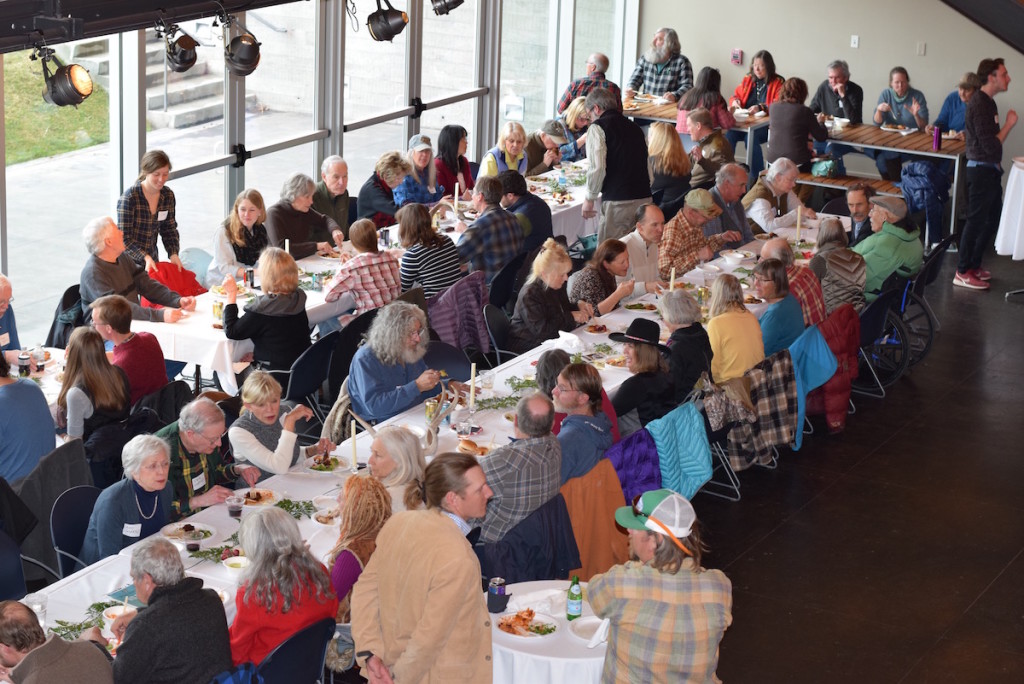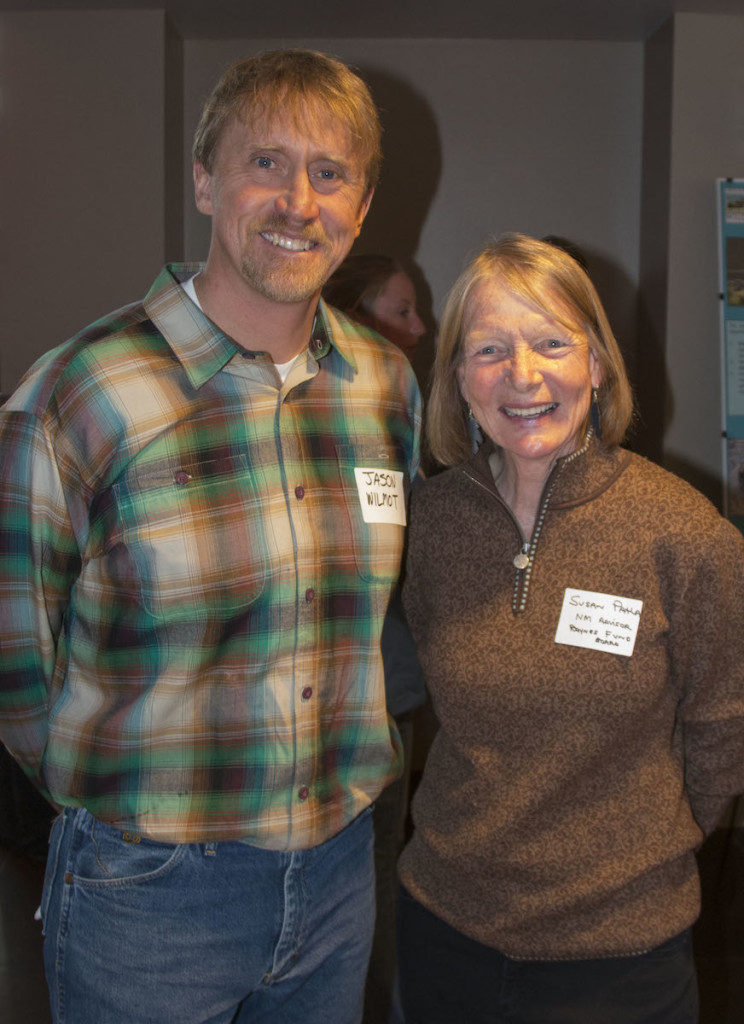Last night we celebrated Nature Mapping Jackson Hole with a unique event that combines a communal potluck dinner with a feature presentation on wildlife science, all within the elegant environment of the Center for the Arts. The fact that it combines family with a love of wildlife and a relentless quest for more wildlife knowledge reflects the enduring spirit that connects many generations here. The Nature Mapping community, as much as anything else, is a manifestation of what it means to live in this particular wild country.

The Nature Mapping Jackson Hole idea, which the local legend Bert Raynes introduced with the help of friends such as wildlife expert Steve Kilpatrick and others, invites us to share our wildlife observations with each other. We can well imagine that much of the conversation at these long tables pictured above revolved around experiences with wildlife. As we look back on the conversations that hatched the Nature Mapping idea, we can also imagine the desire to take our collective stories and pool them together, not only for the good of science, but also to reflect upon and record our shared experience in this wild valley. Thanks to Bert, Steve and the many other members of Bert’s “family” of wildlife nuts, we tell our story together, and wildlife benefits.
 Local legend Bert Raynes with a handful of his many friends at the Nature Mapping Community Celebration. Photo: Mark Gocke.
Local legend Bert Raynes with a handful of his many friends at the Nature Mapping Community Celebration. Photo: Mark Gocke.
The legacy of Jackson Hole has been shaped by many of the world’s foremost wildlife biologists and conservationists. There are so many names that come to mind that listing them all would fill pages, but from the Muries and Craigheads to Raynes and many past and present contributors, we recognize the connections between all in a Jackson Hole “family tree” that has valued and protected wildlife for well more than a century.
Last night, Jason Wilmot, a renowned wildlife biologist at the Bridger-Teton National Forest, shared the stories and science of his work with a rapt audience. Wilmot has studied wolverines for 16 years, and more recently, lynx. He has done some of his work via the Northern Rockies Conservation Cooperative and Wyoming Game and Fish Department, reflecting another trait of Jackson Hole’s family tree – many branches are intertwined. There are few people in the world who know what Wilmot knows about wolverines. If our global knowledge of wolverines is minimal, Wilmot is among a select few to thank for the fact that we know much at all. His very evident passion for his work has also had the effect of engaging more people in the “quest for wolverines and lynx.”
 Wilmot, like so many before him, demonstrates a commitment to his work that is as fierce as his subject’s. To learn about the wolverine’s tenacity, Wilmot and colleagues have searched tenaciously, gathering data as voraciously as Gulo gulo gathers food. As he describes the sideways gallop of the wolverine, you sense that he, like many great wildlife biologists, has tried to imagine himself as the subject in the field, adopting the drifting gait to boogie through the snow. Understanding what the wolverine and lynx do, and how they do it, might lead to learning something new in much the same way that Adolph Murie learned about wolves by living among them in Mt. McKinley (now Denali) National Park.
Wilmot, like so many before him, demonstrates a commitment to his work that is as fierce as his subject’s. To learn about the wolverine’s tenacity, Wilmot and colleagues have searched tenaciously, gathering data as voraciously as Gulo gulo gathers food. As he describes the sideways gallop of the wolverine, you sense that he, like many great wildlife biologists, has tried to imagine himself as the subject in the field, adopting the drifting gait to boogie through the snow. Understanding what the wolverine and lynx do, and how they do it, might lead to learning something new in much the same way that Adolph Murie learned about wolves by living among them in Mt. McKinley (now Denali) National Park.
The excitement of wildlife observations connects us all in a place like Jackson Hole. Thanks to Bert Raynes, Jason Wilmot and so many others who have willingly shared their stories, we feel the joy of a wild place, and respond to the obligation we share to keep our wild family tree as sturdy and enduring as it has always been, protecting the wildlife that enliven us and the home we all share.
Two prolific wildlife biologists, Jason Wilmot and Susan Patla.
Photo: Mark Gocke.
